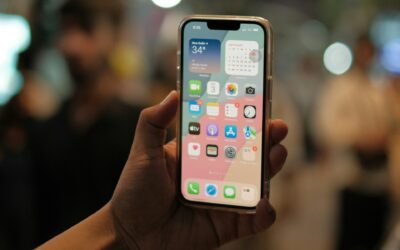In the ever-evolving landscape of internet connectivity, LTE proxies have emerged as a powerful tool for businesses and individuals seeking enhanced privacy, security, and access to geo-restricted content. These specialized intermediaries leverage 4G LTE networks to route internet traffic, offering unique advantages over traditional proxy solutions. As we approach 2025, understanding the intricacies of LTE proxies becomes increasingly vital for those looking to optimize their online presence and data collection strategies. This guide explores the fundamental aspects of LTE proxies, their applications, and how they are shaping the future of internet anonymity and accessibility.
Understanding LTE Proxies
LTE proxies are specialized intermediary servers that route internet traffic through cellular networks, specifically 4G LTE connections. These proxies act as a bridge between users and the internet, masking the original IP address and providing a mobile network-based IP instead.
By leveraging cellular infrastructure, LTE proxies offer unique advantages over traditional Wi-Fi or datacenter-based proxies. They provide enhanced anonymity, geolocation flexibility, and access to mobile-specific content.
LTE proxies can simulate real mobile user behavior, making them valuable for tasks such as app testing, mobile advertising verification, and data scraping from mobile-optimized websites. However, it is essential to mention that LTE proxies typically have lower connection speeds compared to fixed-line alternatives due to the nature of cellular networks.
Understanding the capabilities and limitations of LTE proxies is vital for businesses and individuals seeking to leverage mobile network resources for various online activities.
Benefits of LTE Proxies
Harnessing the power of cellular networks, LTE proxies offer several distinct advantages over traditional proxy solutions. These benefits include enhanced anonymity, as LTE proxies utilize dynamic IP addresses that change frequently, making it difficult to track user activity.
Additionally, LTE proxies provide superior speed and reliability compared to residential or datacenter proxies, thanks to the robust infrastructure of mobile networks.
Another key advantage is the wide geographical coverage offered by LTE proxies, allowing users to access region-specific content from various locations. This feature is particularly useful for businesses conducting market research or testing localized advertising campaigns.
LTE proxies also offer increased security, as cellular networks employ advanced encryption protocols. Moreover, these proxies are less likely to be blacklisted by websites, ensuring smoother access to desired content and services.
LTE Proxies Vs Traditional Proxies
While the benefits of LTE proxies are numerous, it's important to understand how they compare to traditional proxy solutions. LTE proxies offer distinct advantages in respect of speed, reliability, and mobility, making them superior for many applications. Traditional proxies, typically based on residential or datacenter IPs, have been the standard for years but come with limitations.
| Feature | LTE Proxies | Traditional Proxies |
|---|---|---|
| Speed | High | Moderate to Low |
| Reliability | Very High | Variable |
| Mobility | Yes | No |
| IP Diversity | High | Moderate |
| Geolocation Accuracy | Precise | Less Accurate |
LTE proxies provide faster connections, more accurate geolocation, and greater IP diversity. They excel in mobile-centric tasks and offer enhanced anonymity. Traditional proxies, while still useful for certain applications, may struggle with speed and reliability issues. The choice between LTE and traditional proxies depends on specific use cases and requirements.
Applications in Business
Businesses across various sectors are increasingly leveraging LTE proxies to gain competitive advantages and streamline operations. These proxies enable companies to access geo-restricted content, conduct market research, and monitor competitors' pricing strategies more effectively.
LTE proxies also facilitate secure remote access for employees, enhancing productivity and flexibility in the workplace. In digital marketing, businesses utilize LTE proxies to manage multiple social media accounts, automate ad campaigns, and gather audience insights without triggering platform restrictions.
E-commerce firms benefit from LTE proxies by bypassing IP-based limitations during web scraping, allowing them to collect valuable product and pricing data. Additionally, LTE proxies aid in load testing and quality assurance processes, ensuring websites and applications perform ideally under various network conditions.
As businesses continue to digitize, LTE proxies are becoming indispensable tools for maintaining a competitive edge in the global marketplace.
Privacy and Security Considerations
How can users guarantee their privacy and security when utilizing LTE proxies? While these proxies offer enhanced anonymity, users must remain vigilant about potential risks. LTE proxies encrypt data transmission, but additional measures are necessary to guarantee thorough protection.
Users should implement robust security practices and stay informed about evolving threats.
To maximize privacy and security with LTE proxies:
- Use reputable proxy providers with strong encryption protocols
- Enable two-factor authentication for all associated accounts
- Regularly update proxy software and device operating systems
- Avoid accessing sensitive information on public Wi-Fi networks
It's vital to understand that no security measure is infallible. Users should maintain a healthy skepticism and exercise caution when sharing personal information online, even when using LTE proxies.
Setting Up LTE Proxies
With a solid understanding of privacy and security considerations, users can proceed to set up their LTE proxies. The process typically involves selecting a reputable LTE proxy provider, choosing a suitable plan, and configuring the proxy settings on the desired device or application.
Users must obtain the necessary credentials, including IP addresses, ports, and authentication details, from their chosen provider. These settings are then input into the device's network configuration or the specific application that will utilize the proxy.
Many providers offer user-friendly interfaces or step-by-step guides to simplify the setup process. It's essential to verify the connection once configured, ensuring that the device is routing traffic through the LTE proxy as intended.
Users should also familiarize themselves with any additional features or controls offered by the proxy service, such as location switching or bandwidth management, to optimize their experience.
Future Trends in Proxy Technology
The proxy technology landscape is poised for significant advancements in the coming years. As internet usage continues to evolve, proxy services are adapting to meet new challenges and opportunities. Future trends in proxy technology are likely to focus on enhanced security, improved performance, and greater flexibility.
Key developments to watch for include:
- AI-powered proxy selection and optimization
- Integration of blockchain for decentralized proxy networks
- Enhanced IPv6 support and implementation
- Quantum-resistant encryption for proxy connections
These innovations aim to address growing concerns about privacy, data protection, and network efficiency.
As 5G networks become more prevalent, LTE proxies may gradually shift to support faster and more robust connections. Additionally, proxy providers are expected to invest in edge computing capabilities to reduce latency and improve user experience.
The future of proxy technology will likely be characterized by seamless integration with emerging technologies and a continued focus on user-centric solutions.
Choosing the Right LTE Proxy
Selecting an appropriate LTE proxy is a critical decision that can substantially impact your online activities and data security. When choosing an LTE proxy, consider factors such as connection speed, server locations, and the provider's reputation for reliability.
Evaluate the proxy's encryption protocols and privacy policies to guarantee your data remains protected. Look for providers offering 24/7 customer support and a user-friendly interface for easy configuration.
Compare pricing plans and bandwidth limits to find a solution that aligns with your usage needs and budget. Some providers offer specialized features like rotating IP addresses or dedicated IPs, which may be beneficial depending on your use case.
Consider the compatibility of the LTE proxy with your devices and preferred applications. Finally, read user reviews and conduct thorough research to gauge the overall performance and customer satisfaction of potential proxy services before making a decision.
Additional Insights and Data
LTE proxies represent a significant advancement in proxy technology, offering enhanced anonymity, speed, and access to geographically restricted content. Their ability to simulate mobile user behavior and bypass internet restrictions makes them invaluable for businesses engaged in web scraping, SEO monitoring, and social media management. As proxy technology continues to evolve, LTE proxies are likely to play an increasingly important role in digital strategies. Businesses must carefully consider their specific needs and security requirements when selecting an LTE proxy provider to maximize the benefits of this technology.















































